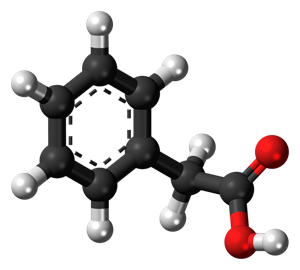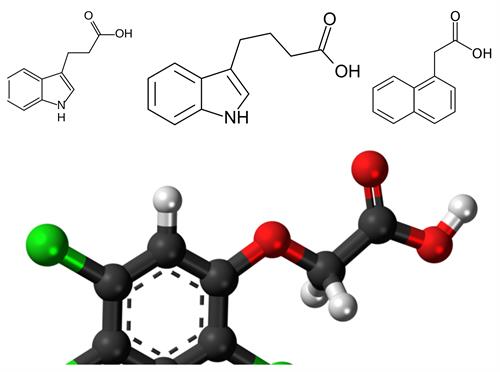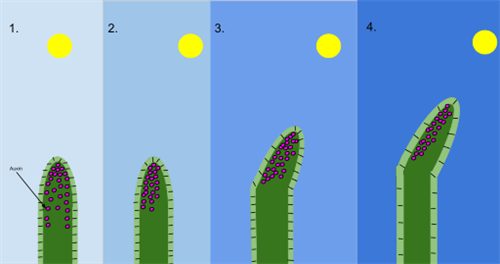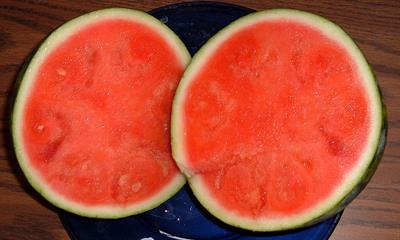PDF chapter test TRY NOW
The term auxin is derived from a Greek word auxin which means 'to grow'. Kogl and Haagen-Smith introduced it in the year 1931.
Important!
Auxins are produced at the tips of stems and roots, and from there they move to the zone of elongation.
In 1880\ Charles Darwin observed unilateral growth and curvature in the coleoptiles of canary grass (Phalaris canariensis). From his observations he finally concluded that some ‘influence’ was transmitted from the tip of the coleoptile to the basal region. This‘influence’ was later identified as Auxin by Went.
Types of Auxins:
As discussed earlier auxins are of two types. They are classified into natural and artificial auxins based on their modes of production.
Natural auxins:
The auxins which are produced by the plants are known as natural auxins.
Example:
Phenyl Acetic Acid (PAA) and Indole acetic 3 Acetonitrile (IAN) are natural auxins.

Phenyl acetic acid (PAA)
Synthetic auxins:
The auxins that are artificially produced but have properties like the natural auxins are known as synthetic auxins.
Example:
Indole 3 Butyric Acid (IBA), Indole-3-Propionic Acid, α-Naphthalene Acetic Acid (NAA), 2, 4, 5-T (2,4,5 Trichlorophenoxy Acetic Acid) are some of the synthetic auxins.

Clockwise from top left: Indole-3-Propionic Acid, Indole 3 Butyric Acid (IBA), α-Naphthalene Acetic Acid (NAA), 2, 4, 5-T (2,4,5 Trichlorophenoxy Acetic Acid)
Physiological effects of auxins:
Auxins are chemicals which induce a variety of physiological effects in the various parts of the plant body. Some of them are as follows:
- They induce the elongation of stems and coleoptiles, thereby stimulating them to grow.

Stimulation of shoot
- They induce theformation roots at lower concentrations and inhibit their formations at higher concentrations.
Important!
Recall the activity that we have discussed under phototropism. In stems, auxin has a growth-promoting effect. It causes growth in the regions of the body that aren't exposed to the sun. The plant bends toward the light as a result. On the root, auxin exerts an inhibiting effect. Root bends away from the light as a result.
- The auxins produced by the apical buds are involved in the suppression growth of lateral buds. This phenomenon is known as apical dominance.
- The external application of auxins induces seedless fruits (parthenocarpy) that are formed without fertilization. It is seen in plants such as watermelon, grapes, lime etc.

Seedless watermelon
- These substances also prevent the formation of abscission layer.
Reference:
https://commons.wikimedia.org/wiki/File:Phenylacetic_acid_molecule_ball.png
https://en.wikipedia.org/wiki/3-Indolepropionic_acid#/media/File:3-Indolepropionic_acid_skeletal.svg
https://en.wikipedia.org/wiki/Indole-3-butyric_acid#/media/File:Indole-3-butyric_acid_structure.svg
https://en.wikipedia.org/wiki/1-Naphthaleneacetic_acid#/media/File:Kwas_naftylooctowy.svg
https://upload.wikimedia.org/wikipedia/commons/1/1c/2%2C4%2C5-Trichlorophenoxyacetic-acid-3D-balls.png
https://commons.wikimedia.org/wiki/File:Phototropism_Diagram.svg
https://commons.wikimedia.org/wiki/File:Watermelon_seedless.jpg
